The western part of Cuba’s old Oriente province, which is now divided into the provinces of Holguin, Granma and Las Tunas, has been a hotbed of dissent since Spanish colonial times. This was the region were Cuba’s first call to arms for self-determination was proclaimed at the Cry of Bayamo. Three generations of rebel leaders have emerged, from here, namely, Bayamo-native Carlos Manuel Cespedes of the First Independence War fame, Holguin-native Calixto Garcia who earned his spurs during the Second Independence War and, last but not the least Biran-natives Fidel and Raul Castro, who led the 1959 revolution.
Even Banes-native Fulgencio Batista can be described as a trailblazer in his own right for being the first Cuban president of mulatto descent although he assumed power via coup d’état. He also came from old Western Oriente. Today, the region, specifically Banes, has also seen the emergence of a new breed of self-styled rebel in the form of dissidents with the late Orlando Zapata Tamayo, an ex-paratrooper-turned-dissident as the most recognizable face.
I wanted to see the region for myself to behold its historical significance. With the onset of Semana Santa, I had the perfect opportunity to visit. A flight to the city of Holguin from Havana only only takes an hour via a Boeing 737 plane leased from the Spanish Calima Aviacion. To economize on fuel and for efficient utilization of air assets, foreign tourists who are mostly bound for Cayo Coco in nearby Ciego de Avila province are joined by Cuban peso-paying locals bound for Holguin.

The foreign tourists were, of course, bewildered with the turn of events because they weren’t told they had to disembark and re-board the planes in Holguin. For the return flight from Holguin to Havana, the airline makes an unscheduled stop in Santiago de Cuba to pick up more passengers, effectively doubling the length of what should have been a one-hour flight. Regardless of the hassle, flying on a 737 is definitely much more comfortable than flying on Cold War era Ilyushin or Yak planes, which are the staples of doemstic Cuban aviation.
Arriving in Cuba’s ever loyal city, as Holguin proudly calls itself, is quiet an adventure in itself. Public transportation to the city center is basically non-existent so one has to make do with the hustlers (also known as taxi drivers) at the airport. My best advice would be: stand your ground (not in the same sense as the “Stand Your Ground” Law in Florida) and negotiate hard. Don’t pay more than 10 Cuban Convertible (CUC) for the fare to the city center. These hustlers will eat you up the moment they spot a weakness.
The city has basically one hotel, the Soviet cinderblock-styled Pernik, which is located near the baseball stadium. It’s affordable at CUC 23 per night, but it is located away from the city center. It’s much better to choose one of the casas particulares or bed-and-breakfast rooms located in the city center itself. Not only do you get much better quality of service, you are also contributing to Cuba’s emerging private sector. From there, the city’s parks and plazas, which are the main draws of this relatively expansive city of 1 million inhabitants, are just a short walk away.
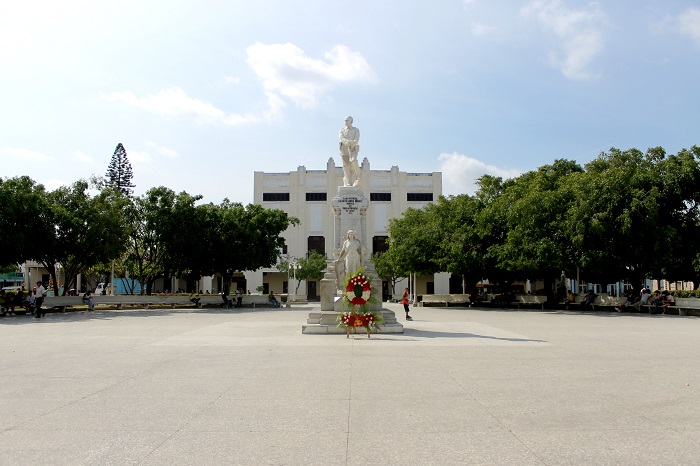
As I mentioned, Holguin’s city life revolves around its parks. Parque de las Flores (which is known as Parque Peralta in foreign guide books, which locals don’t call as such) and Parque Calixto Garcia are not to be missed. On the other hand, Parque San Jose looks like it needs some much-needed maintenance. The former Casino Español on Parque Calixto Garcia, is now a museum, which holds a unique archeological relic known as the Hacha de Holguin (Axe of Holguin). This is actually a small stone implement carved by the indigenous Indians, who were the areas first inhabitants. Just like in Baracoa, the Amerindian features of the city’s residents are noticeable, which is not surprising considering that the fabled Indian settlement of Cubanacan was found here.
Holguin at night is very lively with a number of party places, such as Club Benny Moré, Casa de la Trova and Casa de la Música, to choose from. You may actually prefer to do bar-hopping as the entrance fees to these establishments are relatively cheap (CUC 1 at Benny Moré and Casa de la Trova; CUC 3 for Casa de la Música). Once it gets too boring, you can always transfer to the other establishments as they are located a short walk from each other. A favorite hangout by foreigners is the Café La Begonia in Parque Calixto Garcia. I found the place disagreeable because it is apparently a favorite hangout of sleazy old European men looking to get laid with young local women. This reminded of a joke that locals particularly liked to say: Que hay en Holguin? Mujeres sueltas.
By the second day, I was already raring to get out of the city so I decided to travel to Gibara, which is about an hour away along visibly ill-maintained roads along a scenic route. The municipality is proud of its ties to Columbus, whom locals claim disembarked on its shores. All along the road, the land was visibly parched because it hadn’t rained for months now, according to my driver.
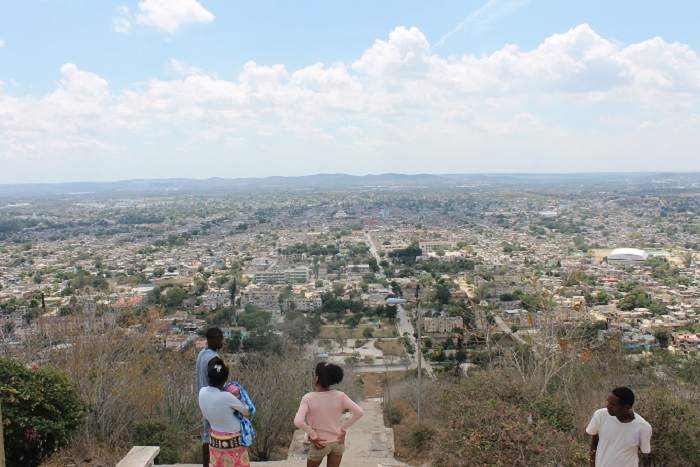
Upon entering the town, a huge sign bearing the name Villa Blanca welcomes visitors, implying that in the past all the town’s buildings where whitewashed. The town has seen its peak during the boom years of Cuba’s sugar industry. The decaying grand buildings along the city’s scenic old plaza speak of by-gone grandeur. The town declined in importance with the advent of the railroad which rendered its port obsolete. A dilapidated hotel named Hotel Ordoño was being renovated at the time of my visit using prison labor.
I asked around to find traces of Columbus’ supposed arrival site (aside from the one claimed in Baracoa), but I was told by a local old-timer that the obelisk which once stood along the town’s Malecon had already been removed a long time ago. This was after it was proclaimed that Bariay, which is located on the other side of the bay, was the actual site of the famous explorer’s disembarkation point. He however gladly showed me the supposed route taken by the galleons when they entered the mouth of the sheltered Bahia de Gibara.
From Gibara on the northern tip of Holguin, I decided to travel that same afternoon to Bayamo, the capital of the neighboring province of Granma. While travelling to Bayamo, the much-awaited rain deluged the region, to the relief of its inhabitants. It was raining very hard as well in Bayamo when I arrived at 7 p.m. The whole travel from Gibara took about 2 hours via an old American jalopy.
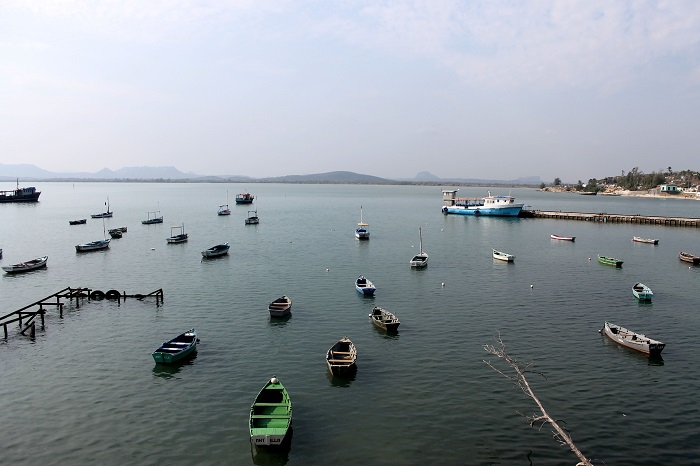
I was pleasantly surprised with Bayamo. Not only is the colonial city well-conserved, but I also noticed the relative lack of hustlers in the city center. I stayed in a hidden gem called Hotel Royalton, located in front of the leafy Plaza Cespedes. The plaza is named after Carlos Manuel Cespedes, Cuba’s founding father, whose old house is located just beside the hotel. Although small and confined, the rooms are well-maintained and comfortable, which is a treat at CUC 30 per night.
With the rain still pouring, I decided to sneak inside the nearby cathedral to attend the Holy Thursday mass. In the four years of stay in Cuba, this was the first time that I actually attended a Church service in Semana Santa. Compared to Habaneros, there are noticeably more church-going Bayamese. There are also proportionally more Church-going younger people here than in Havana.
It was actually a refreshing experience attending the Church service – the sweet aroma of the incense swirling inside a beautiful colonial church. I must say that the Bayamo Cathedral is one of the most beautiful and well-maintained churches I have seen so far in Cuba. The mural depicting the Proclamation of Independence of Bayamo led by Cespedes is definitely not to be missed. Night life was quite boring compared to Holguin (perhaps because it was Holy Thursday). However, I used the opportunity to walk in the historic city’s dark alleys. Not a single soul bothered me at all.
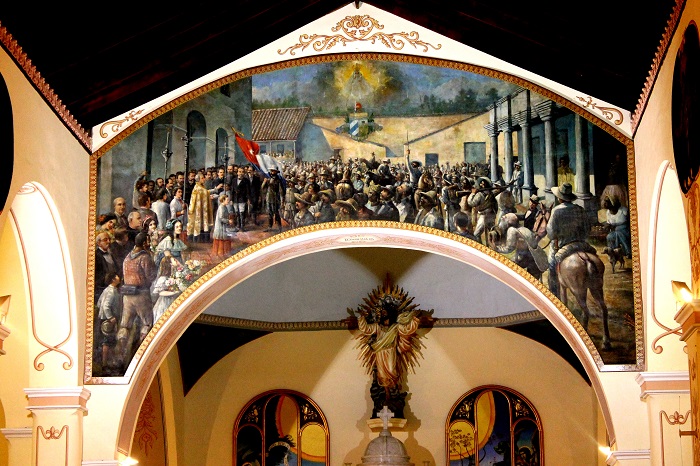
I must say that although I did not initially plan on visiting Bayamo, I am glad I did because I enjoyed walking around the city. One thing that got my attention was that every house in Bayamo have their own water pump. I realized why the morning after as the water pressure at the hotel was very weak. The shower barely leaked. It appears the city has a perennial water supply problem because of cyclical droughts.
I was back on the road again on Holy Friday this time bound for the Castro family finca in Biran, which I reached after a lengthy drive from Bayamo. Unfortunately, the museum was closed as the Cuban government had earlier announced Holy Friday as an official holiday after a request by Pope Benedict XVI. This time, I presented my diplomatic credentials to the security guard to gain access to the finca’s premises. The guard was kind enough to show me around and gave a quick guided tour of its immediate surroundings.
The first thing that struck me about Biran is how isolated and expansive the place is. It’s literally located far, far away from civilization. Don Angel, the Castro patriarch, a self-made Galician immigrant, bought the 13,000 hectare farm from United Fruit Corporation. He used to manage the place for them, complete with a school, a bar, a telegraph office, cockfighting ring (known locally as valla) and a small hotel.
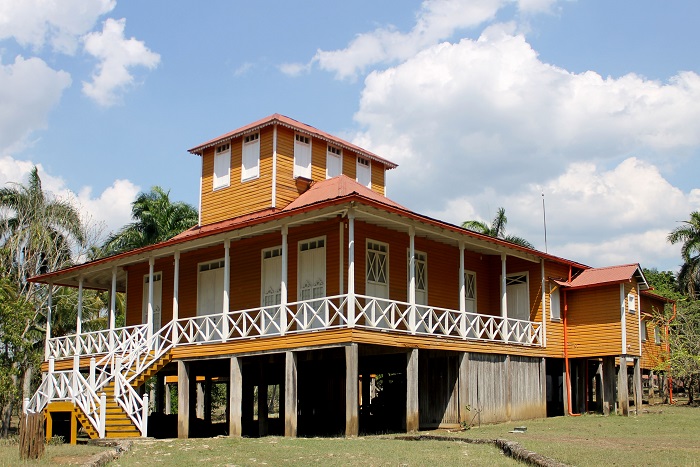
Don Angel’s beat-up 1918 Ford truck is also exhibited at the Castro house. The graves of Don Angel and Doña Lina (the mother of Fidel) along with the parents of Doña Lina were located near the gate right were the old cinema used to be. That cinema used to run by Fidel’s estranged sister Juanita, who is now based in Miami. The reconstructed dwellings of the finca’s Haitian laborers are also to be found right beside the cockfighting ring.
It was on these relatively comfortable surroundings wherein Fidel got his first taste of social activism when, at age 13, he led a strike against, of all people, his own father. The immediate surroundings of the finca (including Mayari and Finca Manacas) were pejoratively known as the 51st State of the United of the States of America because it used to be owned by that poster boy of Capitalist exploitation, the United Fruit Company.
American domination of Cuba’s sugar and nickel industry was one the main contributors to the dissatisfaction with the Batista regime. In his hometown Biran, Fidel had a firsthand look of American domination which definitely contributed to the development of his anti-American views later. Also, did you know that the Bush family (yes, the family of George W.) had links to the United Fruit Company, which certainly stretches way back the enmity between Fidel and “W”?
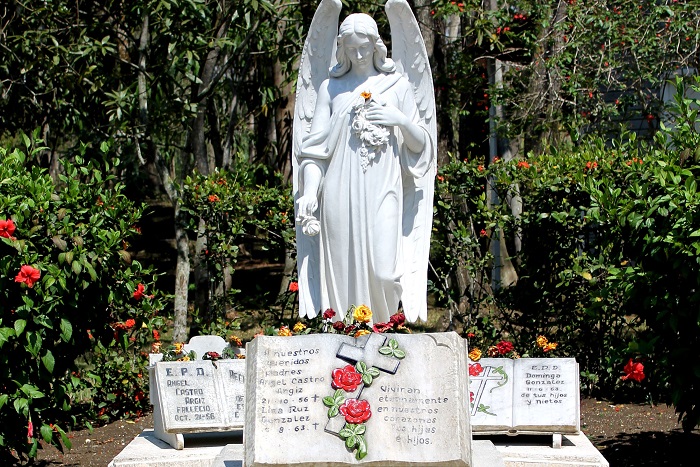
That late afternoon, off I went to Guardalavaca to find a night lodging. The drive from Biran to Guardalavaca was tiring and lengthy, but the scenery was among the most beautiful I have seen in Cuba. Expansive sugarcane fields dotted with thatched huts or bohios were framed by mountains made of limestone.
Up north are the all-inclusive resorts favored by Canadian and European tourists. It is here in Guardalavaca’s Hotel Atlantico where Fidel first inaugurated Cuba’s beach tourism in the 1970s. The hotel became a favorite playground of Russian soldiers. But Altantico has seen better days. The facilities are ageing and its accommodations ill-maintained. For the price of less than CUC 50 per night for an all-inclusive stay, you get what you pay for. For those looking for much better accommodations, the pricier resorts in nearby Playa Pesquero are available at a higher price.
As I was just looking for place to sleep in on my way to Banes, the hotel’s cheap accommodations was more than enough for me. I personally abhor staying in an all-inclusive hotel. I don’t like the perspective that these types of resorts engender. They’re like gulags where local workers are bused in and out to serve the paying customers. I believe that in order to experience the real Cuba, it is best to leave the confines of these controlled and restricted spaces and live among the locals in their real surroundings.
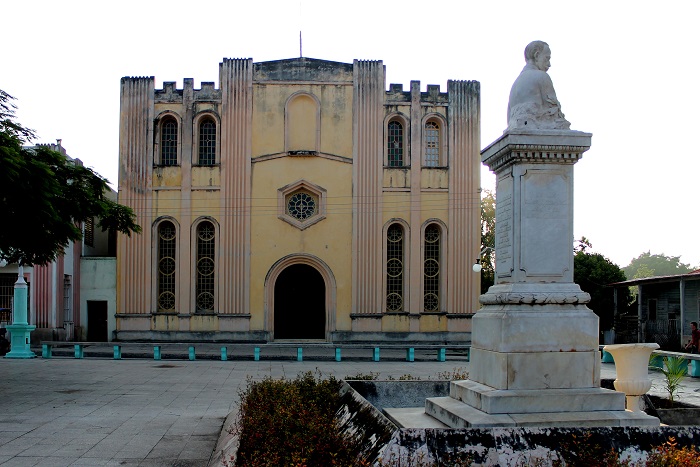
Getting to Banes early in morning after a short drive provided more of the beautiful scenery as the drive to Guardalavaca. Banes is famous for its links to Batista (who was born here in 1901) and Fidel (who got married here in 1948). It certainly is a town full of contradictions, not the least of which was the sizable number of persons waiting in front of the local tribunal who were charged with the crime of killing cows. This is prohibited under Cuban Law punishable by 15 years in prison. What makes the apparition all the more ironic is that Banes is located just beside a place called Guardalavaca, which literally means “Watch the Cow,” in Spanish. I guess they weren’t guarding those cows after all.
The whole town used to be under the management of the infamous United Fruit Company, which ran a big sugar mill called Boston nearby. A number of houses and buildings associated with the American company are still extant. Also, remnants of the region’s Amerindian past are also to be found nearby. In fact, a rare indigenous statue made of gold can be found in the town’s museum.
I went to the local cemetery to check on the Batista family crypt, which was easily the most opulent-looking in the cemetery. The cemetery guide then led me to an opened grave and told me that it was the former burial place of the late dissident Orlando Zapata, who died after a lengthy hunger strike in prison in 2010. His remains have since been shipped to the United States by his mother. I thought about the irony of finding the late dissident’s former tomb while looking for the dictator Batista’s roots.
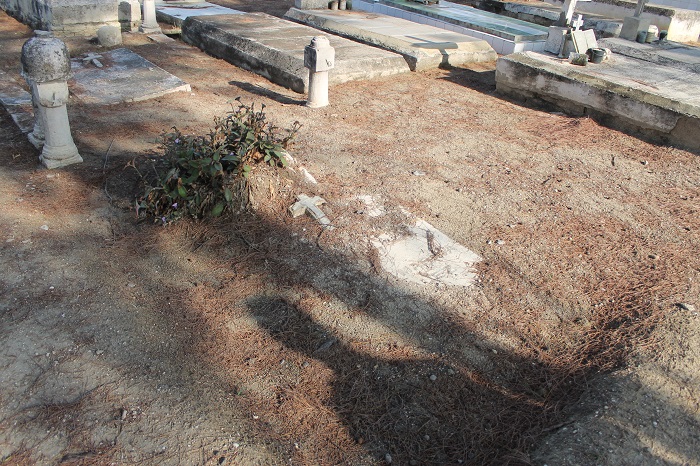
There is a palpable sense that something is percolating in these areas which explains the highly paranoid behavior of the security apparatus. There must be trouble brewing in paradise. According to locals I’ve spoken to, it appears that one could be beaten by State agents for visiting the tomb of the martyred dissident. I don’t’ have any doubt that should there be another political upheaval, Western Oriente, or for that matter Banes, would be right in the middle of it.
Saturday afternoon, I was on my way to Bariay to visit Columbus’ supposed arrival site (So far, I have visited two of them already: Baracoa and Gibara). As far as I’m concerned, the evidence to support this claim is just as flimsy as in Baracoa and Gibara. The artifacts unearthed on the site confirm the existence of old indigenous settlements, but I did not see anything which confirmed the explorer’s disembarkation at the site.
Historians point out the geological similarities of Bariay’s environs to the descriptions made by Columbus (whose real diary in fact disappeared a long time ago). But they could point out the same similarities in Baracoa and Gibara. Columbus’ supposed landing site in Bariay is now marked by a non-descript wooden cross at the back of a hut full of unearthed artifacts. I was told that that bay used to have a marker where the Columbus’ ships, namely, La Niña, La Pinta and La Santa Maria, anchored, but Hurricane Ivan washed them away in 2004. Wherever the land which Columbus described as “la tierra más hermosa que ojos humanos vieron” is located, we don’t really know.
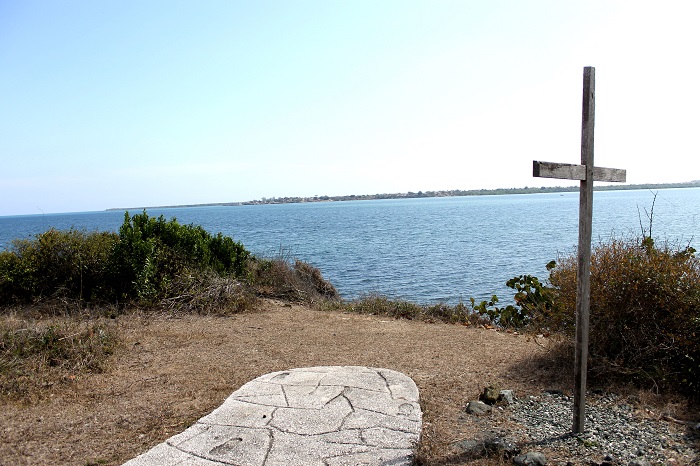
By Easter Sunday, I was back in Holguin although I was billeted in a hotel outside the city with a lovely view of the surrounding plains whose mascot is a beer-drinking donkey named Panchito. This brings a whole new meaning to the term “drunk ass”.
My five-day jaunt across Western Oriente has been a rewarding experience. I never formulated a plan the whole time I was there. I went wherever my mind told me, but, all in all, I found the most interesting places I have so far visited in Cuba.